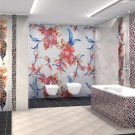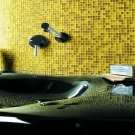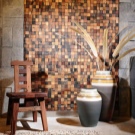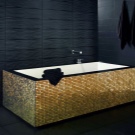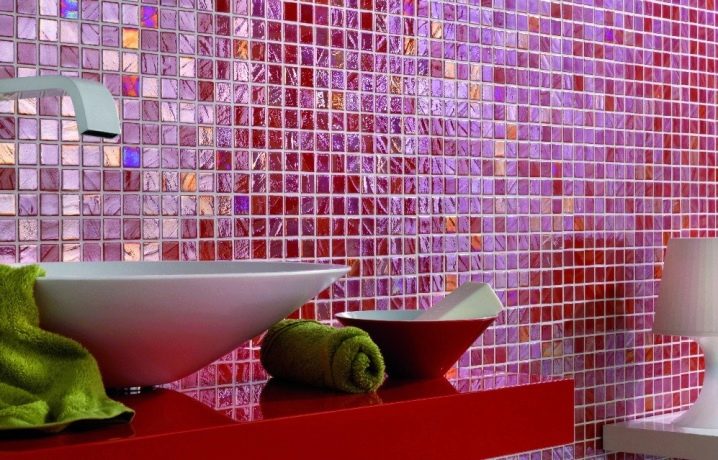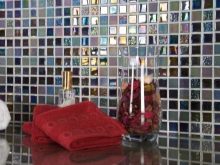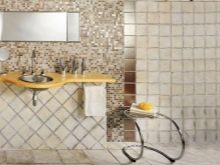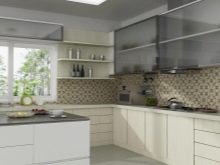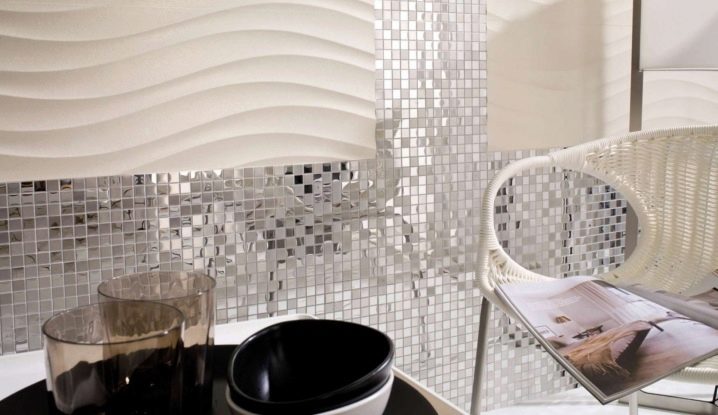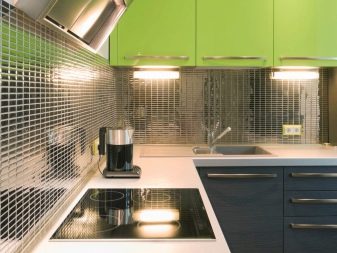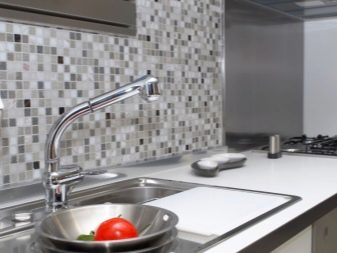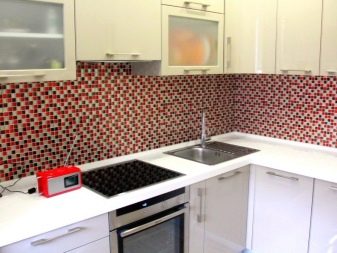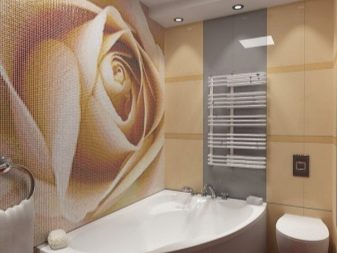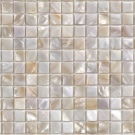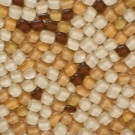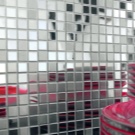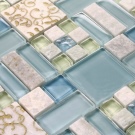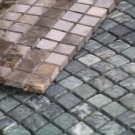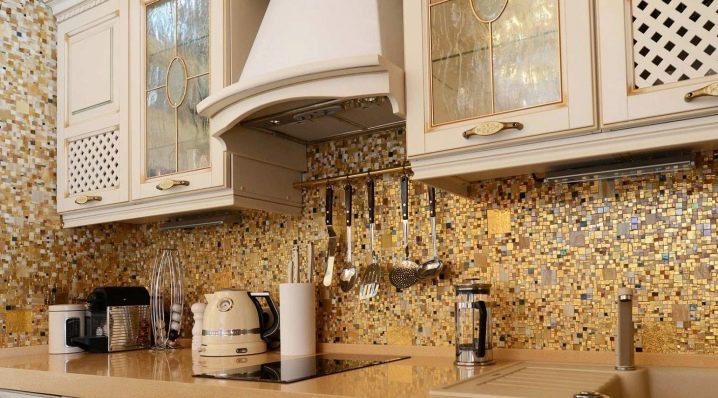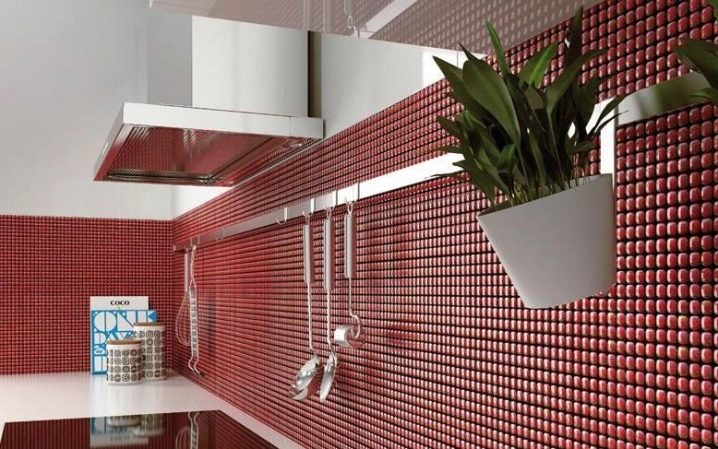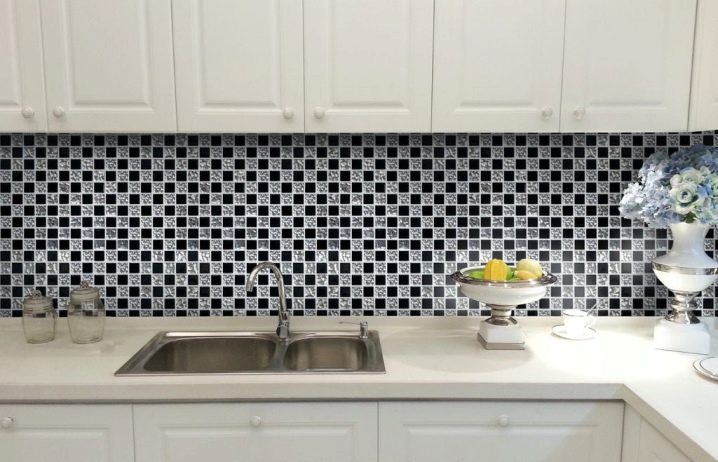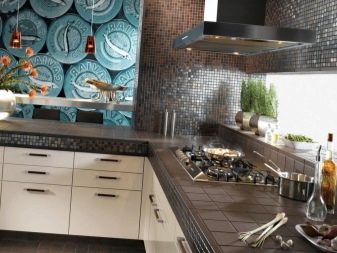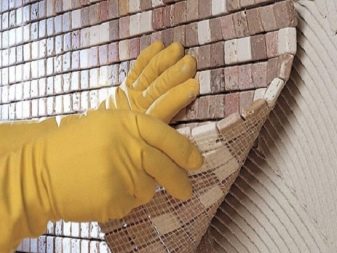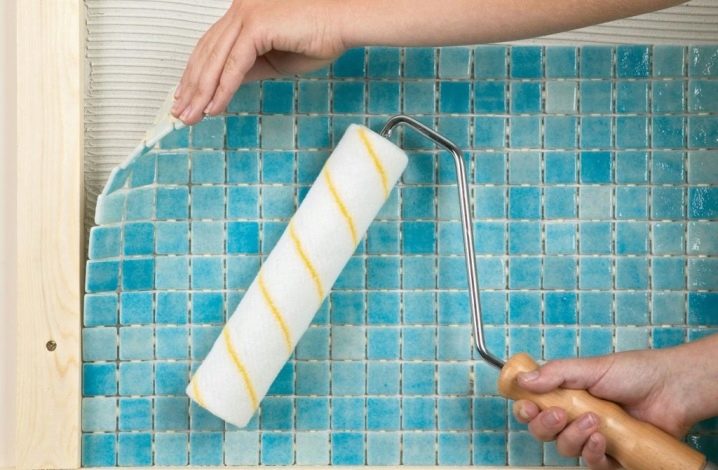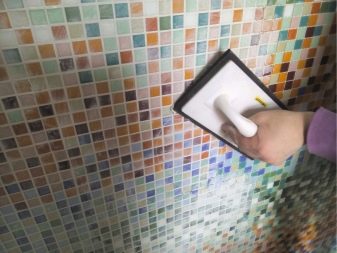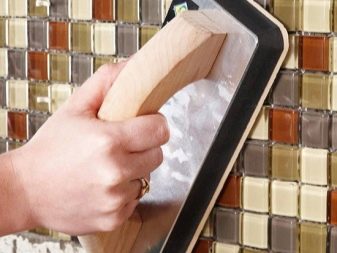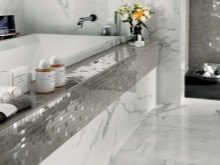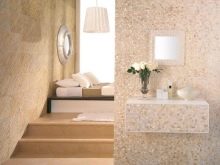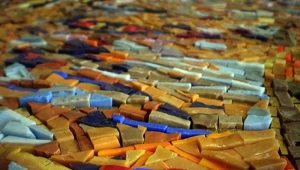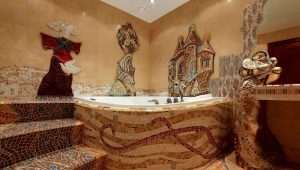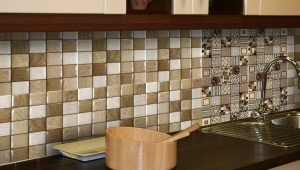Tile-mosaic on the grid: features of choice

Mosaic tiles on the grid - the solution of time-consuming and expensive decoration process. Unlike traditional analogues, it minimizes the deformation of the placement of individual fragments during their laying. Not every type of product from the range presented on the modern construction market is worth buying. We understand the intricacies of choosing a tile-mosaic.
Features and benefits
The mosaic tile on the grid is nothing but a panel of small elements laid out in a specific pattern with the correct tone sequence. These are tiny square fragments. They are used to emphasize certain functional areas.
The advantages of this material a lot:
- it allows you to reduce the time to perform the installation in comparison with the usual mosaic;
- eliminates the need to fit the desired puzzle in the right place of the picture;
- such material allows to bypass difficult curvilinear parts of surfaces and unevenness of the base;
- simplifies the work of the master, eliminates the need to align the distance between the fragments;
- mosaic on the grid is suitable for finishing surfaces of walls, floors, sinks, bowls, arches, and even baths outside;
- material withstands moisture, temperature drop and exposure to detergent preparations;
- mosaic on the grid is abrasion resistant and durable, does not fade under the action of sunlight;
- it is made according to modern standards from high-quality raw materials, so it has high performance characteristics;
- This material has a wide color palette and a variety of textures;
- the mosaic can be used in different rooms of the dwelling, whether it is a bathroom, a bathroom, a corridor or a kitchen.
disadvantages
Despite the advantages of such material, it also has negative sides.
- Grid mosaic is more expensive than usual. A square meter of this material will cost from 8 thousand rubles and more.
- Its styling requires some wizard experience.
- The preparatory process before laying is particularly thorough.
- Cutting such a material is more difficult than a conventional equivalent.
- It is inferior to the mosaic laid out by the master in a non-standard pattern.
Color palette
The color solutions of the mosaic on the grid are various and depend on the place of its use. Bathrooms and bathrooms can be decorated with options in marine colors, for kitchens take fresh greenish and mint tones. Recently, there has been a trend of decorating surfaces with marble, natural stone, pebbles and wood.
The most popular colors are copper, beige, grayish brown, bronze.
The combination of shades is welcomed. For example, it may be a combination of light gray and copper, mustard and black and gray, malachite and gray. Look good combinations of wine, bleached gray and milky tones.
An interesting solution is to mix texture and shade. For example, in a single pattern, smooth and rough elements can be combined with an aging effect.
Materials
On the modern market, mosaic tiles on the grid are represented by different options.
Today on sale you can find such varieties:
- ceramic - mainly glossy, stone, with glitter, nacre, various inclusions;
- glass - often transparent, sometimes with colored stains or reflective effect;
- metal - aluminum or steel, under gold or bronze;
- smalt - alternative to the glass analogue, distinguished by an opaque structure and a variety of color shades;
- stone - from sea stones and pebbles: original natural material with a texture close to the theme of nature.
Subtleties of choice
When choosing a mosaic on a grid, a number of factors must be taken into account. Denote the main ones:
- Tint. What matters is the color of the main finish, be it tile, stone, brick or porcelain stoneware. In this case, the shade may be related, but necessarily different. Otherwise, it will lose expressiveness. See that the color fits well into the overall concept of style. Remove from the list of priorities acidic and toxic paints. They simplify the finish, make it boring, deprive the interior of the versatility.
- Texture. The texture of the tile on the grid is correlated with the main lining.If it is material for walls, it can be smooth and even. For a floor it is necessary to choose options with an opaque and rough surface. A combination of texture (for example, glass and metal, stone and ceramics) is allowed. Start from the type of room: for the kitchen is better gloss, for the living room a matte or metal texture is preferable.
- Volume This decor welcomes limited quantities. If there are a lot of mosaic elements, instead of expressiveness of space, they will create a ripple effect. To avoid this, it is necessary to properly approach the design of the figure and its size. For example, you can make them vertical stripes, accentuate a small niche or a narrow wall.
- The choice of the manufacturer. This material is produced by domestic and foreign trademarks, including manufacturers in China, Germany, Poland and Russia. When buying, you should take into account reviews of real buyers and professional craftsmen left on construction forums on the World Wide Web. This will allow you to better understand which brand of products meets the stated requirements.
- Reputation store. The outlet must be trusted, reliable, working directly with the manufacturer. Buy where you will be provided with documentation in the form of a certificate of quality and compliance with international requirements. Recognize the composition, quality and subtleties of the lining: a good seller owns this information.
- Inspection. Check all items before purchasing. Each tiled square should be properly glued to the base, sagging is fraught with detachment of the square after laying. If visual defects and displacement of fragments are noticeable, then you have an obvious marriage issued for the original products. Inspect the tile for different shades throughout the web. Handing it back to the store after buying it will not work.
- Grid. Pay particular attention to the grid, so as not to fall for the trick of an unfair seller. It should be made of polyurethane, be flexible. Look at its integrity - this is an important factor in high-quality cladding. It will depend on her additional strength of the finishing surface. Do not take the variety on a gauze mesh. Of course, it is cheaper, but it’s not worth waiting for reliability from such material.
- The material of manufacture. The best type of raw material for this tile is ceramics. It may have a different texture, including sequins, contrasting pigments. Its main advantage is compatibility with any stylistic direction of design. In addition, it is easy to maintain and will not burden the cleaning of the room. Glass is brittle, such a material is short-lived. You can choose a metal version.
- Cost Quality goods are not for sale on sale. He is not a member of promotions. If you have noticed this, most likely, in front of you is a fake material. Factor confirming this, is the assertiveness of the seller, eager to by all means sell the mosaic tile here and now.
- The nuances of glue. Each type of mosaic tile on the grid involves the use of a certain type of glue. For example, it is customary to glue a stone mosaic on a cement-based tile adhesive. Polyurethane or epoxy glue should be used for glass tiles. So that the glass does not give out the tone of the base, an adhesive composition of white color is selected. For waterproofing is to buy a version with latex.In order to properly glue the stone or pebble version, you will have to buy a quick-hardening compound or tile cement-based glue.
Quantity calculation
Due to the high cost of quality material, it must be correctly calculated. It should not remain after facing. Disadvantage: it is impossible to pick up due to different lots of goods. To determine the desired volume, calculate the area, multiplying the length by the width, correlate it with the number of grid mosaic per square meter. m. You can make a preliminary layout of modules measuring 50x50 cm and others in the sketch, as well as ask for help from the seller.
Purpose
If you plan to decorate a room with a high humidity coefficient (bathroom or shower) with tiles, take a ceramic or glass variety. For the corridor or the floor is better to choose a ceramic mosaic. If you want to decorate a fireplace projection or a niche in the living room, it is better to use stone tiles, for example, from pebbles. The stone is not particularly resistant to moisture, so it is in the living room it will be the place.
How to lay tile mosaic, see the following video.

